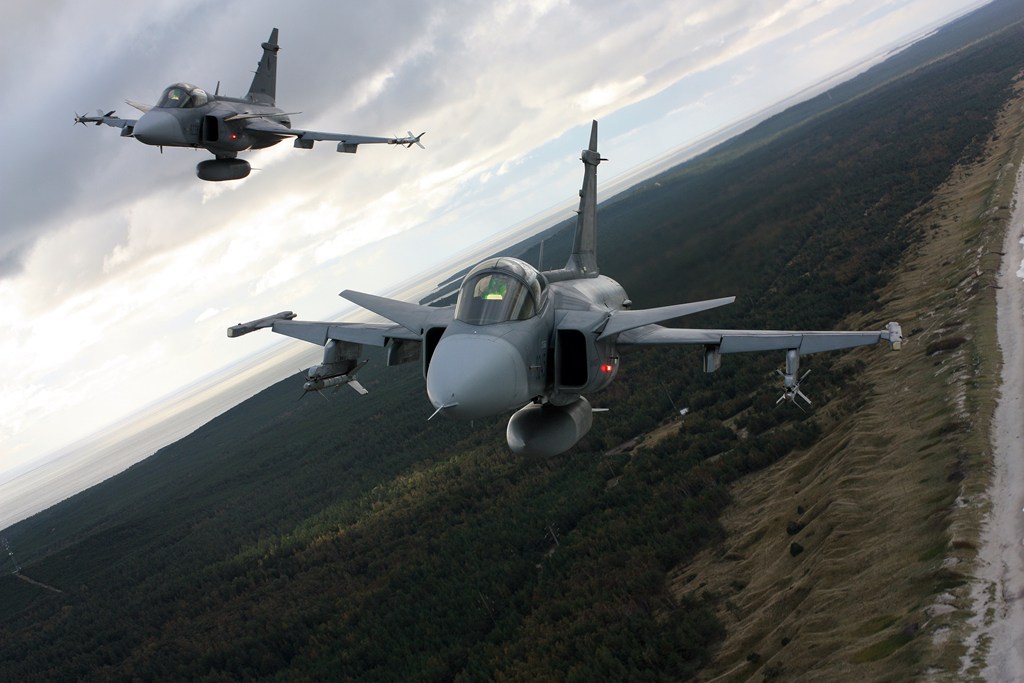


Prime Minister Ulf Kristersson confirmed on Wednesday that Sweden is in talks to sell between 100 and 150 Saab-made JAS Gripen fighter jets to Ukraine — a development that could reshape both the dynamics of the war and Sweden’s own place within NATO’s emerging defence architecture.
At first glance, the deal looks extraordinary. The Gripen, sleek and versatile, was designed precisely for the kind of warfare Ukraine faces: fast deployment, short runways, rugged conditions. The aircraft can be maintained on improvised airstrips and serviced by small ground crews — a significant advantage for a country whose airbases are constantly under threat. While the numbers under discussion may sound ambitious, even a fraction of such a fleet would give Kyiv an aerial deterrent of a different order.
Yet the deeper story lies not in the jets themselves, but in what Sweden’s new assertiveness says about Europe’s shifting defence posture. For years, Stockholm balanced between moral solidarity with Ukraine and caution about direct entanglement. The decision to enter serious negotiations over a major weapons transfer signals that this restraint is giving way to something bolder — a belief that Europe’s smaller powers can, and must, fill the vacuum left by a distracted Washington.
Sweden’s NATO accession earlier this year was more than a symbolic moment; it marked the end of two centuries of military non-alignment. The Gripen deal now stands as its first serious demonstration of what that shift means in practice. Kristersson’s government, under pressure both from domestic hawks and Baltic allies, has concluded that deterrence requires more than solidarity statements.
For years, Sweden’s defence industry was seen as a relic of the Cold War, producing world-class technology for a military that rarely used it. The Gripen programme itself was once criticised as an expensive vanity project. Now, it has become Stockholm’s calling card — the embodiment of European self-reliance in an era of geopolitical volatility.
If the deal proceeds, it will not only provide Ukraine with vital hardware but also bind Sweden more tightly into NATO’s strategic planning. The Gripen sale, like the earlier deliveries of armoured vehicles and artillery, is a clear signal that Stockholm intends to be more than a passive partner. It wants to help set the tempo of Western policy rather than merely follow Washington’s lead.
For Kristersson, the move carries both promise and peril. Domestically, there remains unease about becoming too directly involved in a war that still feels distant to many Swedes. Sweden’s political left warns that the deal risks eroding the country’s neutrality ethos, while fiscal conservatives fret over the potential cost to taxpayers. Saab’s production capacity will need to be stretched, and government guarantees may be required to sustain the delivery schedule.
But the government argues that the strategic case is overwhelming. Russian aggression has upended the security map of Northern Europe. Finland’s border is now a direct front line with a militarised neighbour, and the Baltic Sea — once a tranquil trading corridor — is increasingly a NATO lake. For Stockholm, ensuring that Ukraine survives and that Russia is contained is not an act of charity but of national self-defence.
Still, Sweden’s approach is characteristically careful. Unlike the more political fanfare surrounding the delivery of F-16s, the Gripen negotiations are being conducted with minimal rhetoric. Officials stress that the aircraft are “designed for defensive use” and that Sweden’s contribution complements, rather than replaces, broader Western efforts. Yet few doubt that such a transfer would mark a qualitative leap in Ukraine’s air capability.
The Gripen negotiations also highlight a growing European determination to shoulder a larger share of the continent’s defence burden. With the U.S. election campaign deepening transatlantic uncertainty, leaders from Warsaw to Stockholm are quietly accelerating efforts to create an indigenous military-industrial network. The message is clear: Europe can no longer rely indefinitely on American patience or firepower.
For Saab, this represents both opportunity and challenge. The Gripen, long overshadowed by the F-35 and Rafale, is suddenly finding new relevance. Its cost-effectiveness and adaptability appeal to nations seeking autonomy from U.S. defence suppliers. A successful sale to Ukraine could open new export avenues in Central and Eastern Europe — and reposition Sweden as a pivotal defence hub within NATO.
Yet it also risks further antagonising Moscow. Russia has already denounced Stockholm’s arms transfers as “provocations,” and the Kremlin is likely to view a large-scale jet sale as another step toward Western escalation. For Kristersson, that is the inevitable cost of deterrence. Neutrality once guaranteed Sweden’s safety; today, it would guarantee its vulnerability.
What is unfolding is not just a commercial transaction but a strategic transformation. Sweden, once the quiet conscience of Europe, is becoming one of its most pragmatic defenders. In the process, it is offering a model for other mid-sized European states: that strength and sovereignty can coexist with principle.
If the deal is finalised, Ukraine will gain a formidable new asset — and Europe, a reminder that deterrence does not always come from its largest powers. In Kristersson’s Sweden, the line between moral duty and military realism has blurred — and in that convergence lies the new logic of European security.
Main Image: By Arz1969 – Ministry of Defence – Lithuania, GFDL, https://commons.wikimedia.org/w/index.php?curid=31919219